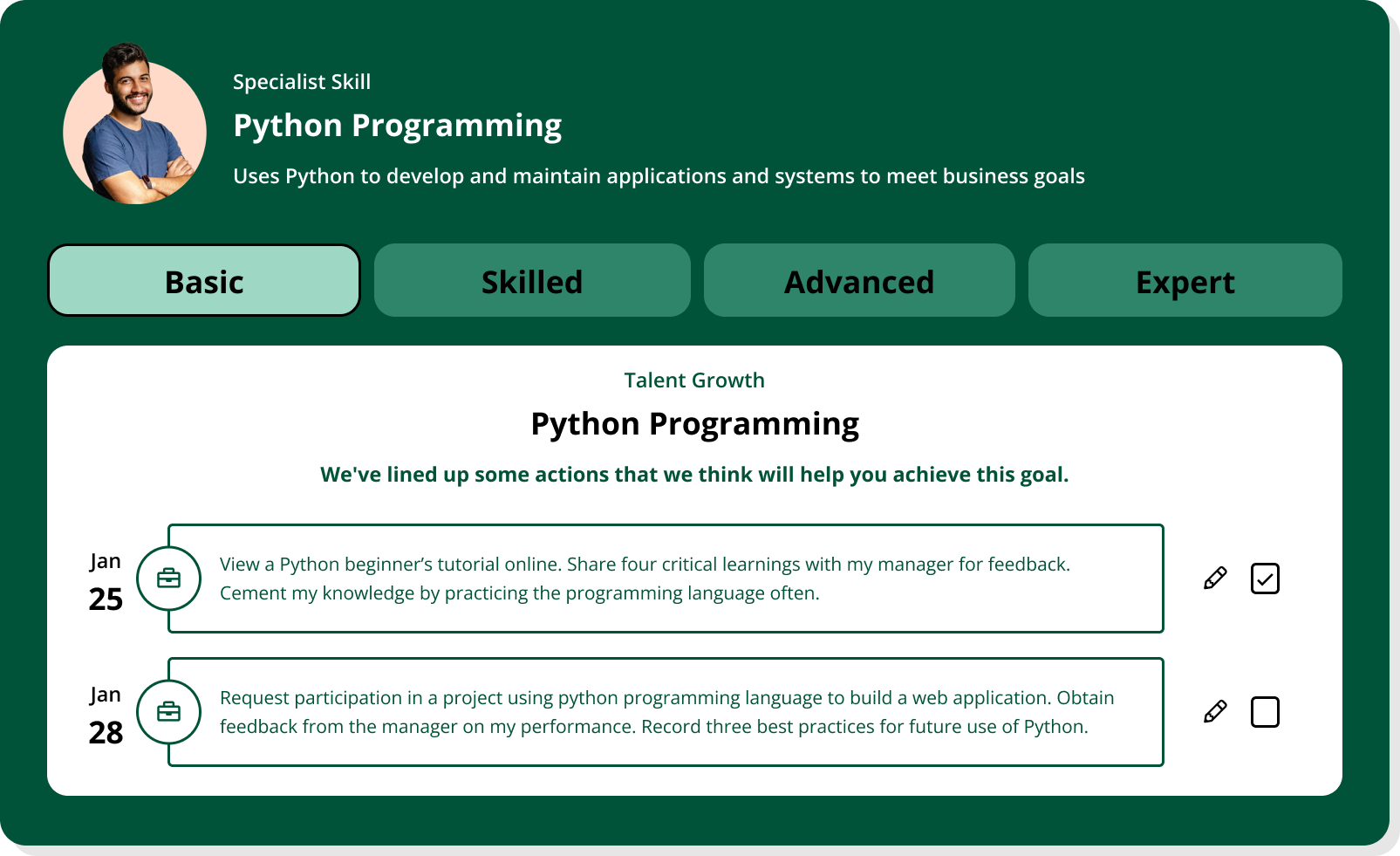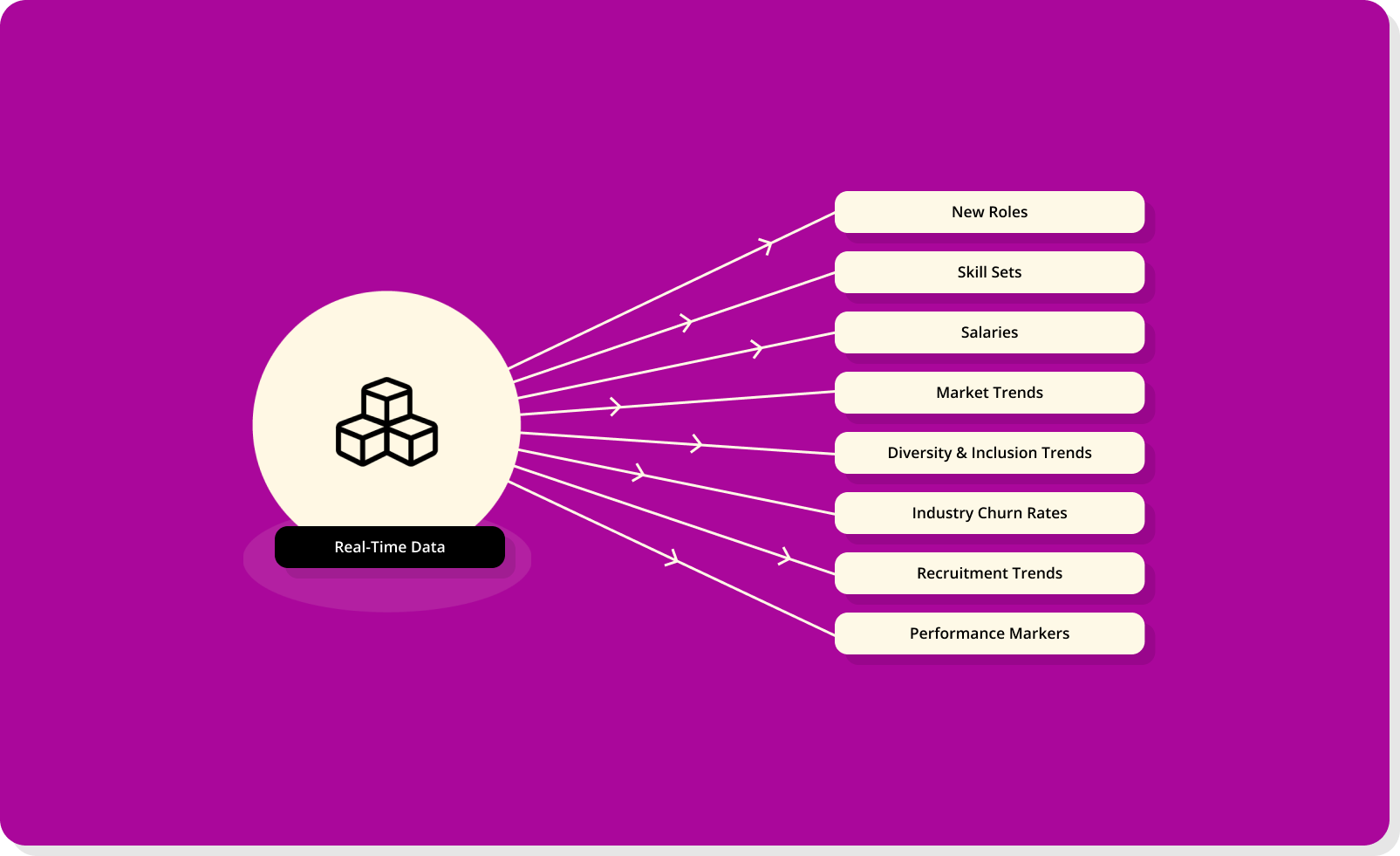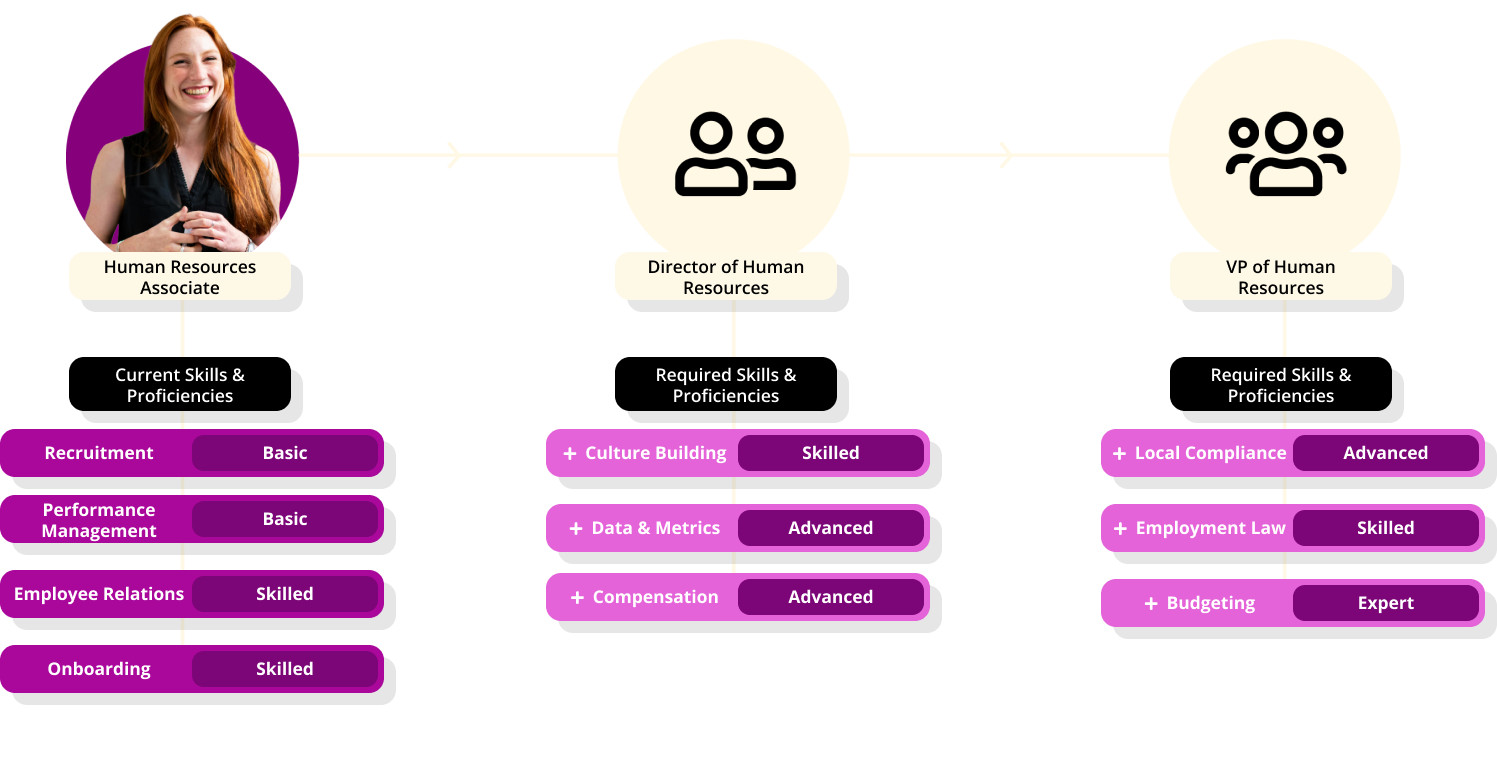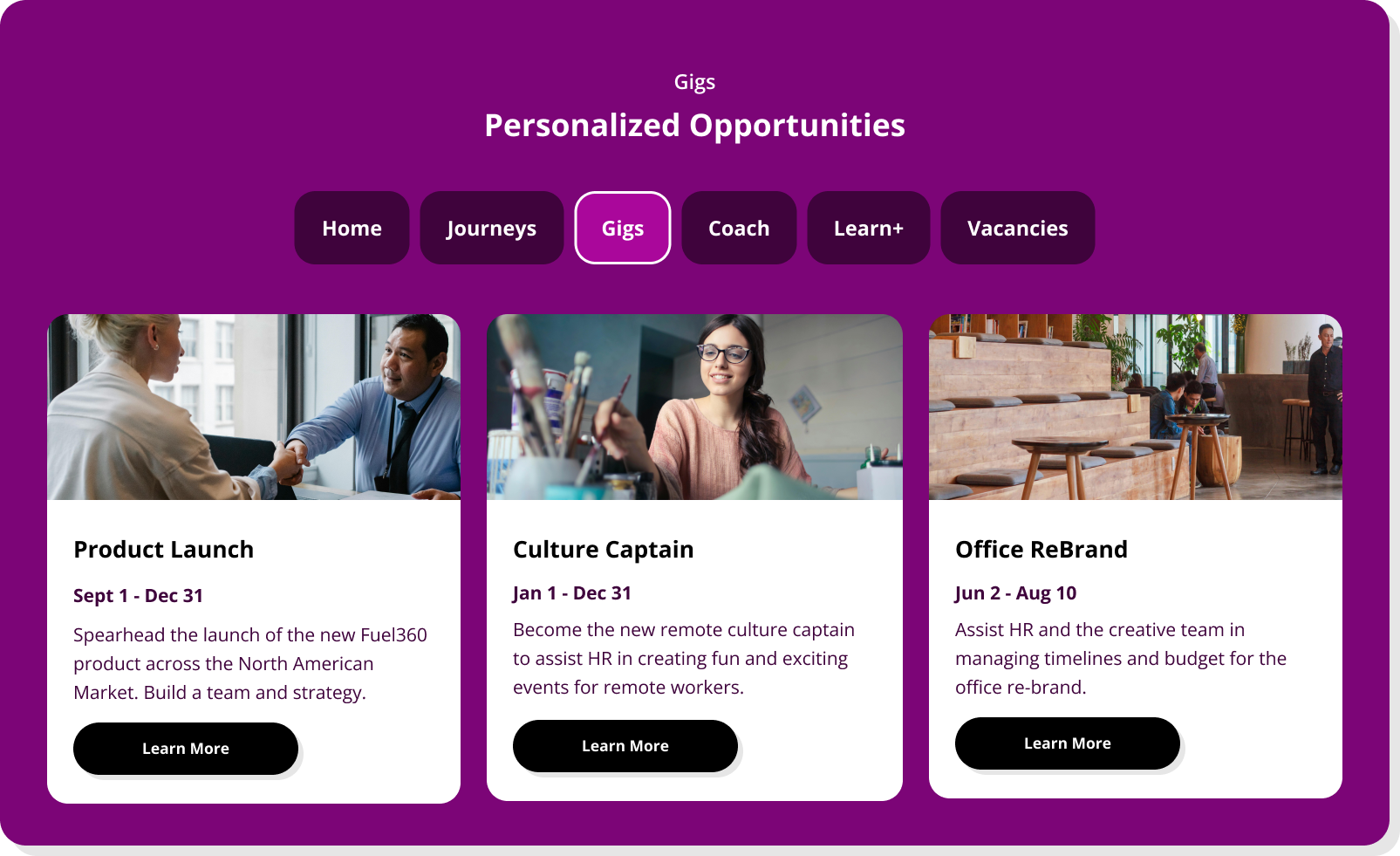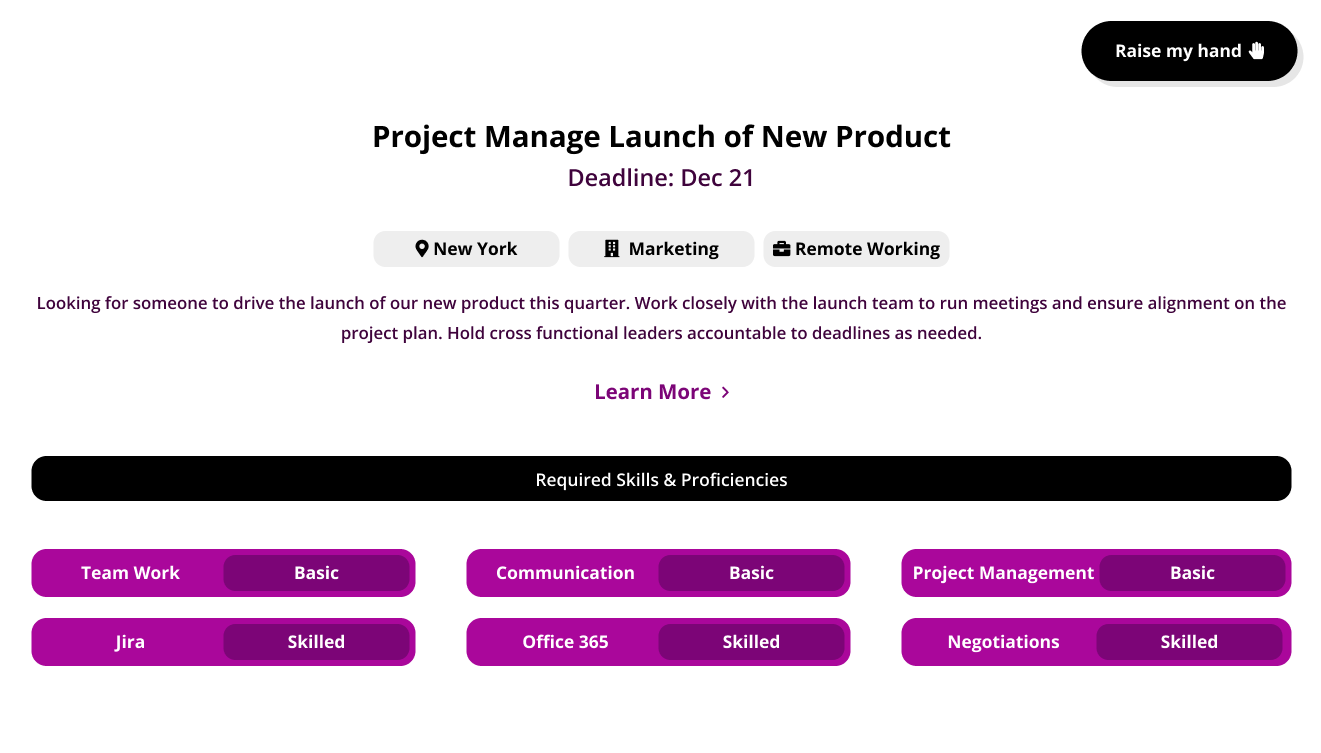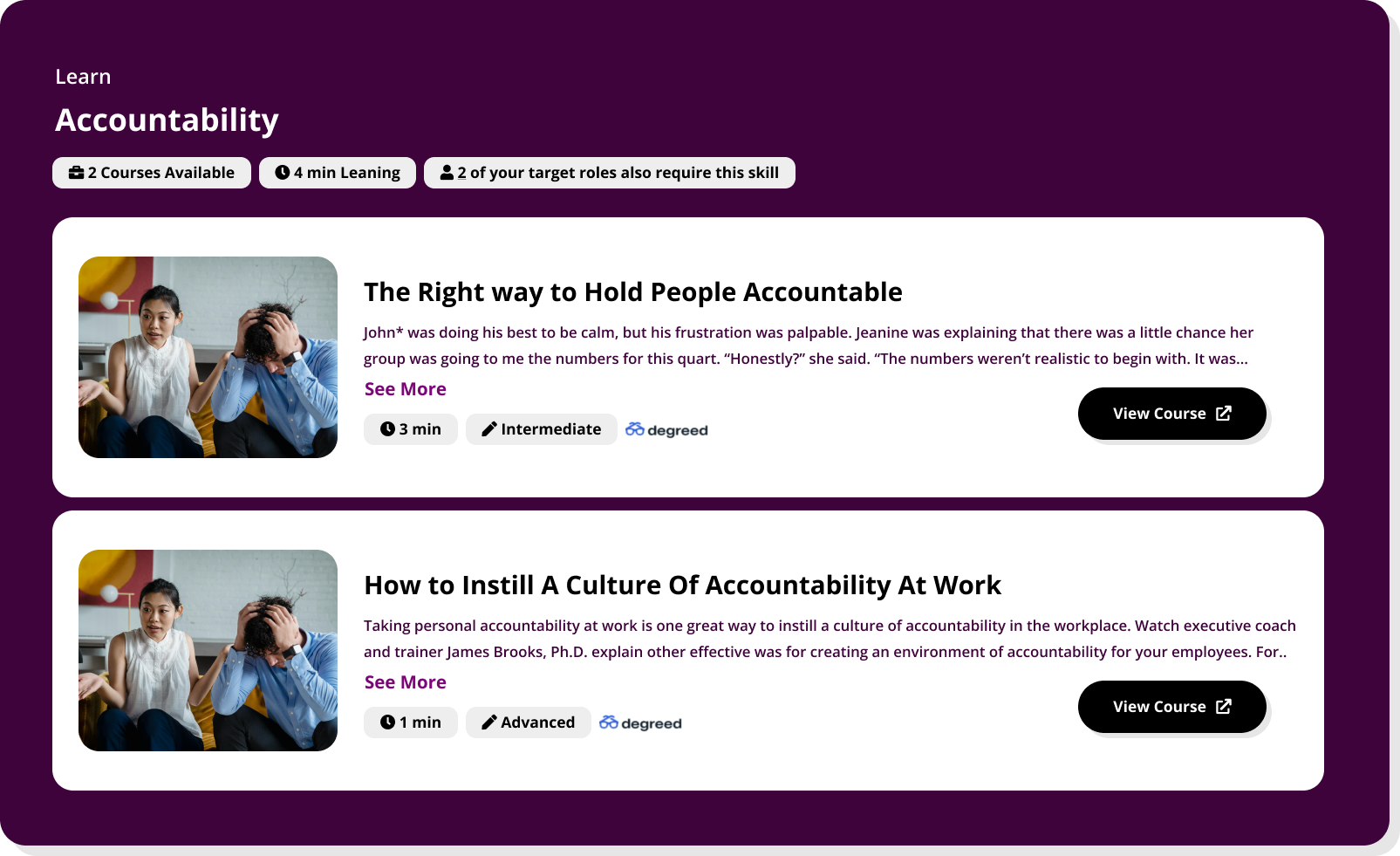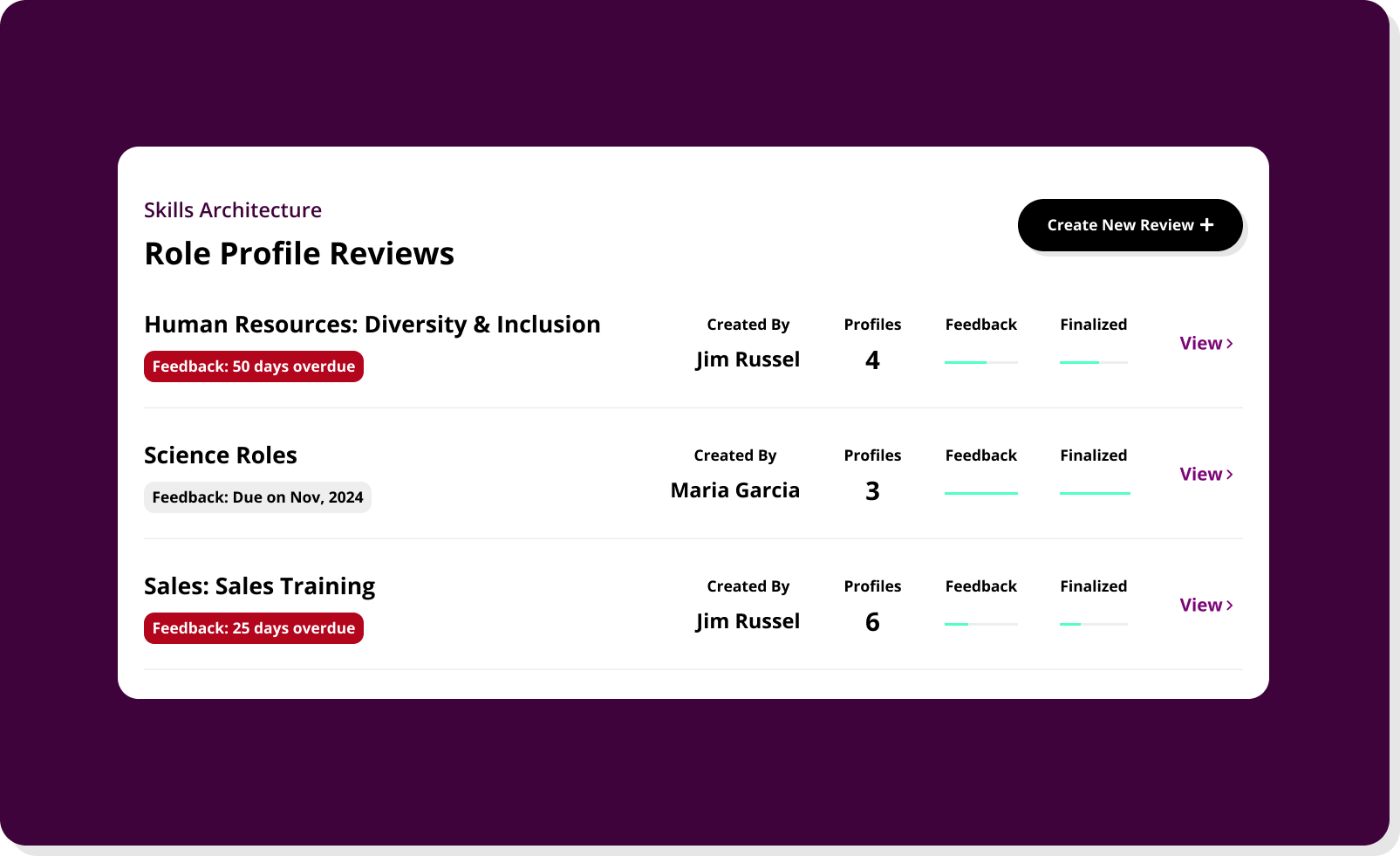Your next big initiative is coming—and you’re already short on people. Or, at least, that’s how it feels.
The truth is, most organizations don’t know their capacity. Managers make gut calls, and talent sits idle in one department while another scrambles to increase staff. As a result, burnout flares up not because people aren’t working, but because work isn’t distributed with visibility.
This is the cost of capacity planning without real-time skills data.
You can’t align people to work if you don’t know:
- Who’s available
- What they’re capable of
- Where they could be better deployed
That’s where strategic workforce capacity planning comes into play. It helps organizations do more with the talent they already have by turning static organizational charts into dynamic, skills-based talent supply maps.
In this post, we’ll show you how leading HR and workforce planning teams apply skills intelligence to:
- Uncover internal capacity that would’ve otherwise been missed
- Avoid over-hiring by reallocating hidden talent
- Respond faster to changing priorities without burning out your people
What is workforce capacity planning?
Workforce capacity planning is the practice of aligning your internal talent supply with the organization’s current and future demand for work. It helps you answer the critical question: Do we have the right people with the right skills available at the right time?
It’s a step beyond basic head count planning. Traditional methods focus on roles and hours, but they often miss the bigger picture, namely, what skills exist across your workforce, who’s operating at full capacity, and where you could deploy internal talent more effectively.
This is why so many organizations find themselves simultaneously overextended and underutilized; they hire for roles they don’t need while existing talent sits idle or underleveraged.
One simple shift can change that though: Stop planning around job titles and start leaning on skills. For instance, instead of asking, “Do we need to hire a new project manager?” ask, “Do we already have someone with project management skills who isn’t fully tapped?”
To do that well, you need visibility into not only who your people are, but also what they’re capable of. That’s where strategic workforce capacity planning becomes a competitive advantage. It helps organizations move from gut-instinct resourcing to data-driven decisions, which reduces over-hiring, prevents burnout, and makes better use of the talent they already have.
Why workforce capacity planning is crucial
When workforce capacity isn’t managed strategically, organizations make expensive, avoidable mistakes. Talent is misallocated, high performers burn out, and hiring decisions are made blindly.
Strategic workforce capacity planning helps you prevent these breakdowns before they start.
1. Stop burnout before it turns into attrition
When a critical initiative lands, usually, your top performers take it on because they’re reliable, visible, and trusted. But without capacity planning, these same people become overextended while others remain sidelined.
This imbalance leads to burnout, disengagement, and, eventually, churn.
With capacity planning built around skills and availability, you can rebalance workloads, uncover hidden talent, and match people to work that fits. The result is more sustainable performance and less talent walking out the door.
2. Reduce unnecessary hiring
Too often, teams assume they need more people when they really need visibility. A hiring manager sees a resourcing gap and requests a larger head count, but if you had a clear picture of skills and capacity across the business, you’d likely find someone already capable of stepping in.
Strategic capacity planning helps you redeploy rather than hire. That translates to lower labor costs, faster ramp times, and smarter workforce decisions, especially when your budget is tight.
3. Respond faster when priorities shift
You can’t predict big shifts like a product pivot, market change, or internal reorganizations, but you can prepare for it.
Without capacity planning, teams scramble to reshuffle, leaders make decisions based on incomplete data, and momentum stalls. But with the right systems in place, you can see:
- Who’s available
- What skills they bring
- Where they could be most valuable
That level of agility lets you adapt in days, not months, giving your organization a significant competitive edge.
5 steps to implement workforce capacity planning
Most organizations already have the building blocks of workforce capacity planning in place: organizational charts, head count forecasts, resource allocation conversations, etc. But what sets high-performing teams apart is how they connect those pieces into a dynamic, skills-aware system that evolves with business needs.
They shift from static head count tracking to strategic talent planning that accounts for real-time skills, evolving priorities, and hidden internal capacity.
Here’s how to build that system step by step.
1. Start with a clear view of your workforce
Capacity planning starts with clarity, but most teams miss that.
You might know how many people are on your team, but do you know what they’re working on right now? Which skills are underutilized? Who’s overloaded or stuck doing work that doesn’t match their strengths?
The challenge is that data lives in silos, project workload sits in PM tools, and skills stall in the HRIS. Aspirations, if tracked at all, are trapped in engagement surveys or career conversations that don’t make it to workforce planning.
You need a unified view, which means understanding not just what roles exist, but also:
- What people are doing now
- What they’re capable of
- What they want to grow into next
This is how you move from a head count table to a comprehensive map of your workforce that lets you spot misalignments and untapped potential.
2. Forecast what’s coming with precision
Once you’ve mapped supply, shift your focus to demand.
This is where traditional planning starts to collapse. Most forecasts are too high level to be useful (e.g., “We’ll need more head count in Q4,” or, “Let’s budget for three engineers,”). But those vague inputs don’t reflect the complexity of real work.
Instead, break down what’s coming:
- What projects or initiatives are planned?
- What kind of work will they require and at what skill level?
- Are there known changes on the horizon, such as a new product launch, market entry, or team restructuring?
This step shouldn’t be overly complex, but it does require collaboration. If strategy, HR, and delivery teams aren’t sharing information upstream, your forecast will lag behind your reality.
3. Identify gaps that are hiding in plain sight
Now, compare what you have with what you’ll need.
This is about surfacing the mismatches that hinder execution:
- Do you have critical skills siloed in one person?
- Are there pockets of bandwidth in teams whose skills don’t match the upcoming work?
- Could someone already on your payroll step into a higher-value role if they had the right support?
This is where hidden gaps become visible. It’s not a shortage of people, but because you’re misaligned on where and how they’re deployed.
Robust planning reveals these gaps early so you don’t have to play catch-up when delivery slows or burnout spikes.
4. Fill the gaps without resorting to hiring
Here’s where many teams overcorrect. A gap appears, and the instinct is to open a requisition. But hiring is costly, slow, and frequently unnecessary.
If you’ve carried out the first three steps correctly, you’ll know whether the gap can be solved by:
- Reallocating talent from low-priority work to high-impact areas
- Developing internal talent who have adjacent skills or growth potential
- Hiring only when the gap is unfillable with existing resources
This is where Fuel50 makes the biggest impact. It gives you real-time visibility into your internal talent market so you can search not just by job title, but by skills, capacity, and growth interest. That turns hiring from a reflex into a last resort.
5. Operationalize and revisit often
The biggest mistake companies make is treating capacity planning as a one-off event.
Your workforce is always changing. New projects launch, people upskill, others leave, and business priorities evolve. If your plan fails to adapt, your decisions will slowly fall out of sync with reality.
Build planning into your operating cadence. Review it monthly or quarterly. Update your skills data. Track where capacity becomes stuck or underused and refine continuously.
Done right, workforce capacity planning becomes a strategic advantage that helps you move faster, make smarter decisions, and do more with the talent you already have.
A real-world example of workforce capacity planning executed with precision
Before Trane Technologies transformed their workforce strategy, the business picture looked like this:
Open roles were piling up, career conversations felt disconnected from actual business needs, and managers were making resourcing decisions based more on instinct than insight.
For a global company with over 41,000 employees, that wasn’t just inefficient—it was a barrier to growth.
Trane knew they couldn’t scale by hiring their way out of every gap. The organization needed a smarter system that could surface hidden capacity, guide employee development, and give leaders a clearer line of sight into who could step into what position.
That mindset shift led to Career Progress, an enterprise-wide initiative powered by Fuel50.
Rather than optimizing job titles, Trane redesigned their architecture around skills, introducing globally consistent career frameworks, role-based Success Profiles, and Fuel50’s Career Navigator. Suddenly, workforce capacity moved from filling jobs to understanding:
- Which skills the business needed most
- Where those capabilities already existed
- How to match people to opportunities with speed and precision
This new model gave leaders real-time visibility into internal talent—not just who was available, but who was ready, qualified, and motivated to move.
The impact was immediately noticeable:
- Internal recruitment jumped from 38.7% to 55%, which reduced hiring costs and ramp-up time.
- Lateral moves surged, unlocking capacity that had sat idle.
- Engagement scores climbed, especially among engineers and people leaders in the pilot.
But the real win was in building a more agile and resilient workforce where skills, aspirations, and business needs aligned in a single system of record and action.
With Fuel50, Trane turned career development into a lever for workforce planning, and talent planning into a driver of performance.
That’s the future of capacity planning; instead of guesswork and requisitions, companies enjoy intelligent, skills-based deployment at scale.
How Fuel50 makes workforce capacity planning smarter, faster, and more strategic
For most organizations, workforce capacity planning falls apart because they can’t plan what they can’t see. Skills are buried in outdated organizational charts, roles are ambiguous, and development is decoupled from business needs.
Fuel50 changes that by giving you clarity into your people—who they are, what they can do, and how they can grow. Here’s how.
1. Use skills ontology as your single source of truth
You can’t plan capacity around job titles alone. You need to understand what skills exist in your organization and how they align with future work.
Fuel50’s expert-backed Skills Ontology is your source of truth. Built and maintained by a global team of workforce experts and IO psychologists, it’s a living system that evolves with the labor market, your industry, and your internal talent.
The ontology is continuously updated through:
- External labor market trends and emerging skills
- Internal usage data and employee skill self-assessments
- Input from HR leaders and subject matter experts
This means you always work from an up-to-date, validated skills foundation.
Fuel50 creates a dynamic skills map across your entire organization, allowing you to:
- Visualize skills by person, team, or region
- Identify critical gaps, surpluses, and overreliance patterns
- Forecast capability needs for upcoming projects
Instead of asking, “How many heads do we need?” you can ask, “What capabilities do we already have, and how can we redeploy them?”
That’s the difference between reactive staffing and proactive workforce design.
2. Use career architecture to power agility
Job titles are often vague, inconsistent, and politically influenced. That’s a problem when you’re trying to redeploy talent across geographies or functions.
Career Architecture replaces chaos with structure. It standardizes roles based on scope, complexity, and skill requirements so talent conversations become strategic, not subjective.
This lets you:
- Align managers around a shared language for capacity
- Make resourcing decisions based on verified capability
- Enable fair, transparent mobility across the business
Take Trane Technologies, for example: With over 41,000 employees around the globe, their leaders needed a clearer, faster way to shift talent. After implementing Fuel50’s Career Architecture, they created globally consistent job structures that helped managers see who was ready for lateral, vertical, or cross-functional moves, thus improving internal mobility by 16% in less than a year.
When everyone operates from the same map, it’s easier to move talent to where it matters most.
3. Activate the capacity you already have with Talent Marketplace
Every organization has untapped capacity—employees with adjacent skills who could step into new roles if given the chance.
Fuel50’s Talent Marketplace spotlights that hidden capacity. Its AI-powered engine uses a combination of employee-entered skills and aspirations, verified skill assessments, learning history, current role data, and availability to match people to opportunities inside your business.
That includes:
- Open roles they’re qualified to grow into
- Short-term gigs and projects that build adjacent capabilities
- Mentorships and learning pathways that support long-term mobility
Unlike traditional job boards or manual talent pools, the Talent Marketplace is live, personalized, and continuously updated. As employees learn, signal new interests, or become available, the system responds by returning the best matches in real time.
This means you can:
- Redeploy internal talent before defaulting to external hires
- React to shifting business needs with agility
- Empower employees to raise their hand for new opportunities, which increases engagement and ownership
The result is a dynamic, self-healing internal marketplace that helps you uncover hidden capacity, reduce hiring costs, and increase employee retention—all without additional head count.
4. Keep your capacity data alive with dynamic Skills Profiles
Most workforce systems treat skills as a one-time input captured during hiring or annual reviews, then quickly forgotten. Fuel50 flips that on its head with Dynamic Skills Profiles that continuously stay up to date to reflect how employees learn, grow, and evolve over time.
Profiles update automatically based on:
- Learning completed through your integrated LMS
- Stretch assignments and gigs completed in Fuel50
- Verified skill assessments from managers or peer reviews
- Employee-entered preferences and career aspirations
This gives you a live signal of workforce capability. Managers can instantly see who’s growing, who’s ready for more, and who might be hitting a developmental ceiling.
For example, one Fuel50 client used dynamic profiles to redeploy a group of underutilized analysts into a new, AI-focused initiative based purely on skill readiness and aspiration signals from the platform. No guesswork. No external hires. Just stronger alignment between people and opportunity.
That’s how you make capacity planning both accurate and agile.
5. Make capacity planning a business discipline with leadership dashboards
Fuel50’s leadership dashboards give executives, personnel leaders, and operations teams a unified, data-rich view of workforce capability. Updated in real time, they’re designed to support fast, aligned decision-making.
These dashboards integrate seamlessly into your existing HRIS, LMS, and performance platforms to ensure your data is always current. As employees update skills, complete development activities, or signal new career interests, that information flows directly into the dashboard.
Fuel50’s dashboards offer:
- Up-to-the-minute skills intelligence at the team, function, or enterprise level
- Visibility into skill gaps, emerging resourcing risks, and growth opportunities
- Scenario planning tools to guide build-vs.-buy resourcing strategies
This is how Fuel50 turns capacity planning into a cross-functional discipline grounded in data, integrated into your workflows, and built to drive execution at scale.



